The Airth Up There: Jake Parker on the Development of SkyHeart and its World
Every once in a while a project comes around that hits you hard, right in the center of your Venn diagram of interests. It’s rare, but it can happen where you find something that doesn’t just look good, but feels like everything you want. For me, that’s Jake Parker’s SkyHeart. This graphic novel is a new project that Parker’s looking to fund on Kickstarter, and it feels like a Final Fantasy story developed by Hayao Miyazaki, but with an even greater emphasis on airships. Pair that with it being an all-ages comic and having phenomenal art, and, well, I was a huge fan before the Kickstarter even launched.
That’s why I reached out to Parker to talk about the book, how it came together, what made it a story he wanted to tell, his background, the world of Airth (which is where the story takes place), the cast of the book, and a whole lot more. Give it a read below, and if this fantasy adventure book sounds like something you might be into, give the Kickstarter a look and think about backing it. As of now, this is the only place you’ll be able to find it.
Let’s start with where your path has led you before getting to SkyHeart. You’ve had a career in animation and comics over the years before taking a huge leap into the Kickstarter world (again) for this original graphic novel series. As an artist with clearly a lot of options, what made you want to tell your own stories, and to do so in the comic form?
JP: I love telling stories, and I love drawing and so for me comics is the perfect art form because of the way it so naturally combines the two. I have so many stories and characters, and worlds I want to share with the world I get frustrated anytime I’m working on something that takes me away from doing that. As much as I enjoyed working on Rocket Raccoon, all I wanted to do was draw SkyHeart.
In terms of your art, are you self-taught or did you go to art school? Even beyond that, what have you found to be the biggest influences as your art has developed over the years?
JP: I didn’t go to art school. I took art classes at my local community college, but my formal schooling never went beyond that. I ended up leaving school to work in the animation industry and that’s where I continued my training. I looked to the professional artists around me as my teachers, and I learned so much from them over the years.
SkyHeart proves that great ideas can come from anywhere. I love its origin story and how it spun out of your imagination running wild during a road trip in Arizona. It’s been a long time since that drive, so I’m curious as to how the book developed over the years, and what drove the choice to really make this happen once and for all?
JP: It started out as sketches and notes in my journal. Then I got an opportunity to do a comic for the Flight anthology, and I thought this would be a great time to put some of these ideas into a story and really flesh them out. That story turned into Hugo Earhart and it was like this, primordial version of what SkyHeart would become. It had some of the right elements, but it never quite gelled for me. I went on to do two graphic novels with another character that’s even older than Skyheart: Missile Mouse (Came up with him in 9th grade). And I learned a TON about comics from drawing that. But I still didn’t feel ready to take on SkyHeart.
What finally pushed me over the edge was trying to develop a property with Skottie Young. We had really enjoyed working together on Rocket, and we wanted to do a creator owned book together so for about a month we tossed ideas back and forth to each other. And the more we talked ideas, the more I wanted to just do SkyHeart. I think Skottie picked up on this, and he told me something like “don’t let me hold you back on SkyHeart, I think that’s the best thing you should be doing right now.” So I decided to go for it and see if I could get the funds to do it via Kickstarter.
For those that don’t know, what’s the 10,000 foot view on SkyHeart? What’s it all about for those who don’t know?
JP: SkyHeart is a fantasy-adventure graphic novel set in another time, on the crumbling planet Airth. It’s about an inexperienced delivery boy named Wake who sets out on an epic journey to find the fabled Star Seed, a magic relic with phenomenal power trapped inside it. This ancient artifact could be the key to saving Airth from imploding on itself, but Wake wants to use it to save his mother’s life.
Eons ago, Airth, was literally torn apart by a pre-historic war between the gods who created it. Deep within Airth’s core, the evil fallen god Malnyx seeks to become powerful again. She sends her underlings to find the Star Seed first and destroy it so that nothing can stop her from collapsing Airth and turning it into the ultimate source of power: a black hole.
When Wake’s mother’s life force is stolen by one of Malnyx’s underlings, Wake learns that finding the Star Seed could be the way to bring his mother back. He sets out to find it and is joined by Yahna (a Sylph warrior), Grimm (a sky-whale), and Limberg (a flying pig).
You talked about some of your influences on the Kickstarter page, from Miyazaki works like Nausicaa and Castle in the Sky and classic adventure stories like Star Wars and Indiana Jones. While those are influences – and you can see them in the art and world of SkyHeart – one thing I’m curious about is what appeals to you about this world. What is it about Airth and its inhabitants that speaks to you as a storyteller?
JP: I love this world on a couple of levels. There’s the fantasy of it on one hand. It’s a world of immense storytelling possibilities and adventures. And on the other hand this world is very symbolic of our own world. We live on a broken planet, not just physically, but morally too. And I’m all about stories that follow brave characters who set out to fix problems, both in our own world, and in worlds of fiction.
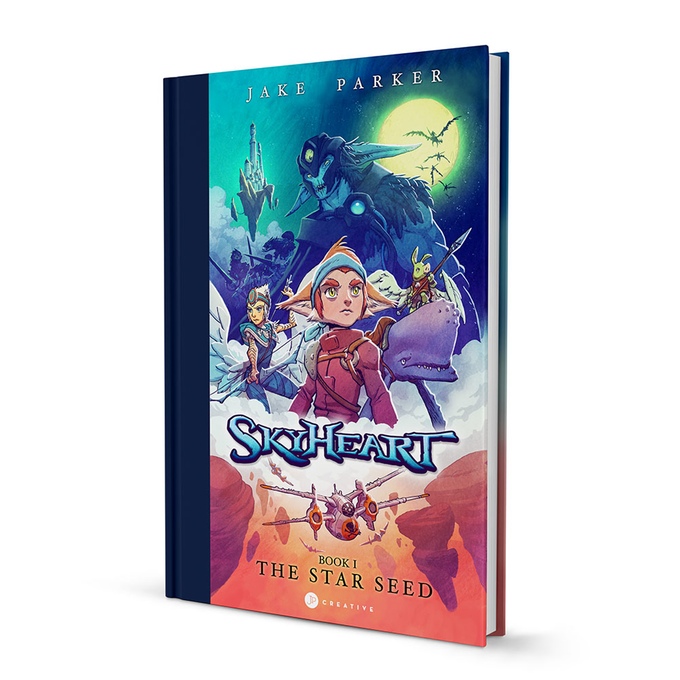
I love the cover to the book. It gives the book a really epic feel, and reminds me of what might have happened if Drew Struzan covered Kazu Kibuishi’s Amulet. To you, what did you want the cover to say about the book, and how many iterations did you go through before deciding on this one?
JP: This cover was me humbly trying to do a Struzan approach to my world. Struzan covers work because usually we are familiar with the characters and their struggles and seeing the montage of them together helps us recall the adventure we witnessed on screen. I wanted to conjure up those same emotions with this illustration, hoping to siphon off the feelings people already have for stories like this.
I really didn’t go through many iterations. This is pretty close to my original thumbnail. (laughs) I knew what I wanted.
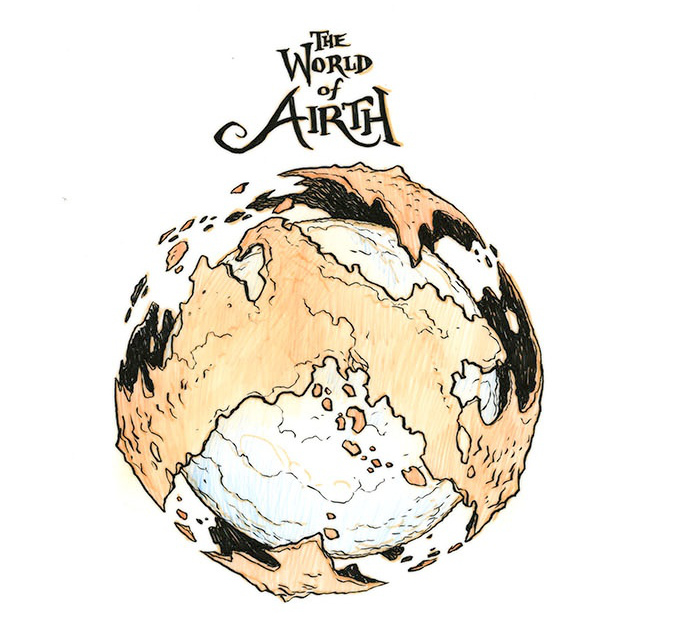
One of my favorite things about this project is how much you’ve clearly thought out the world of Airth. It’s not just an environment. It feels like a core element of the story in a very real way. For you, what made it so important to not just make that a secondary part of the story, but something substantial and fully realized?
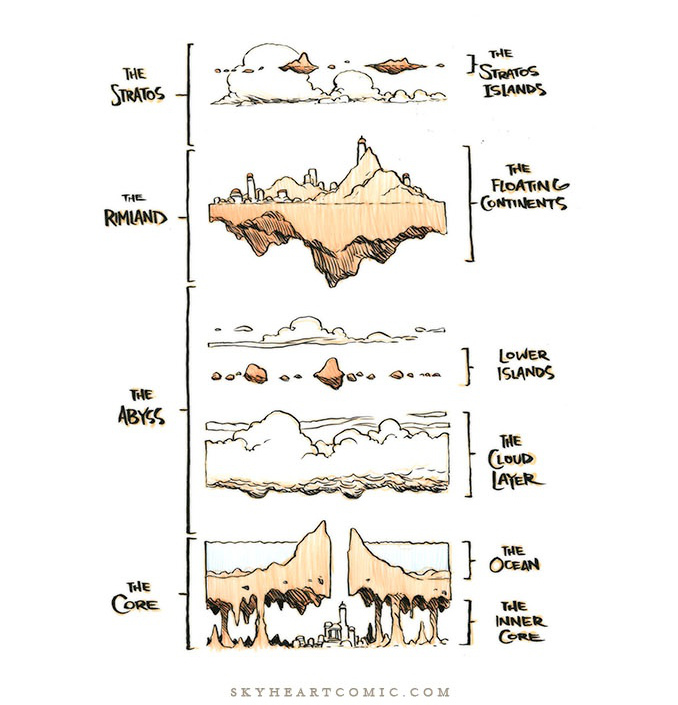
JP: The planet is a main character. It has its own story arc and is very central to the mythology of SkyHeart, the adventure of SkyHeart, and the story of SkyHeart. While developing SkyHeart over the years, I dug deep into the creation story of the planet. I know who created it and why, I know how it crumbled and why, and I know it’s eventual fate. It’s the fate of this planet that I want to tell through some very personal stories on a character level. The first one being The Star Seed, and it’s told through the eyes of Wake.
As a creator, is world building something that appeals to you? Is that part something you dig into with delight, and can it be a rabbit hole you find yourself falling down in a deep way?
JP: Totally! It’s my favorite thing ever. It might even be my weakness. I love history and especially the broad strokes. Books like Guns, Germs, and Steel and the works of James A. Michener always interest me. I love the incredible cross-section books, the visual dictionaries, stuff like that. I’m more likely to sink my teeth into a book like that than one with a strong narrative. I look to film more for story than I do books. It might be because very early in my youth I spent a lot of time with my nose in a set of encyclopedias.
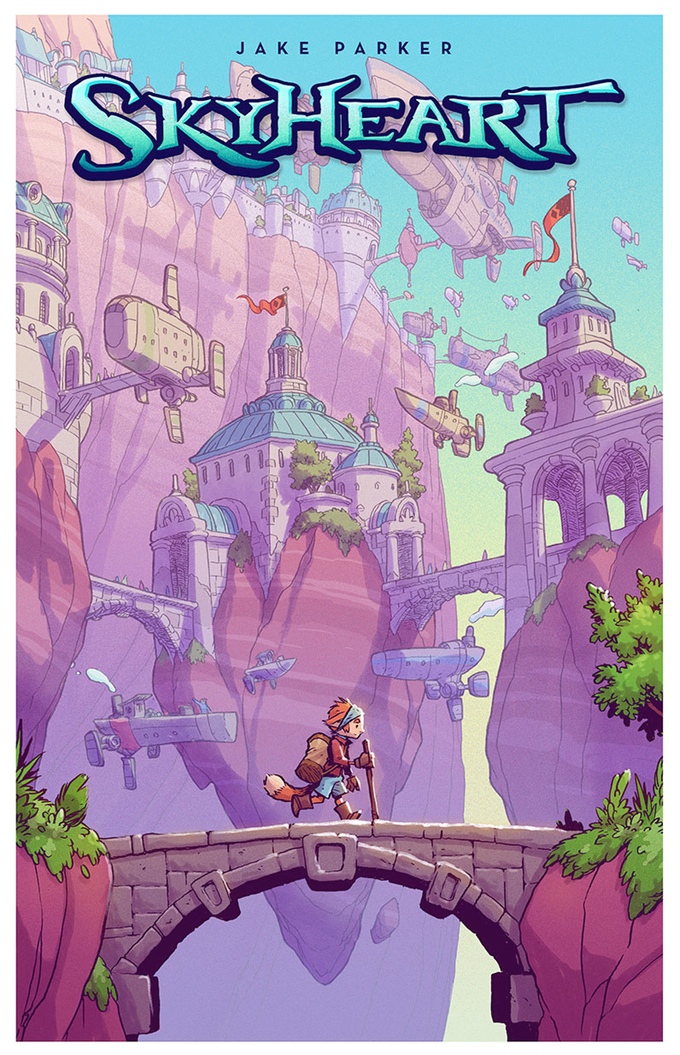
As a major fan of airships, this print you put together for the book makes me fan myself like a socialite at the Kentucky Derby. I love it. When it comes to the elements within the book like the airships and the architecture of the world, what did you look to for inspiration, and how different did you aim to make the looks of the environment and tech of the varying realms?
JP: Designing a completely new world is HARD! Luckily we have a world right in front of us, rich in history and culture that we can look to for ideas and reference.
The look for the Rimlands is definitely based on European architecture and style from about the baroque period to the Edwardian era. The Stratos islands is based on more ancient cultures like the Native Americans and the peoples of Central and South America. And the Core is based more on H.R. Giger meets the Victorian era.
As for airships, I’m pulling from craft designed in the 30’s and looking at a lot of Miyazaki references too.
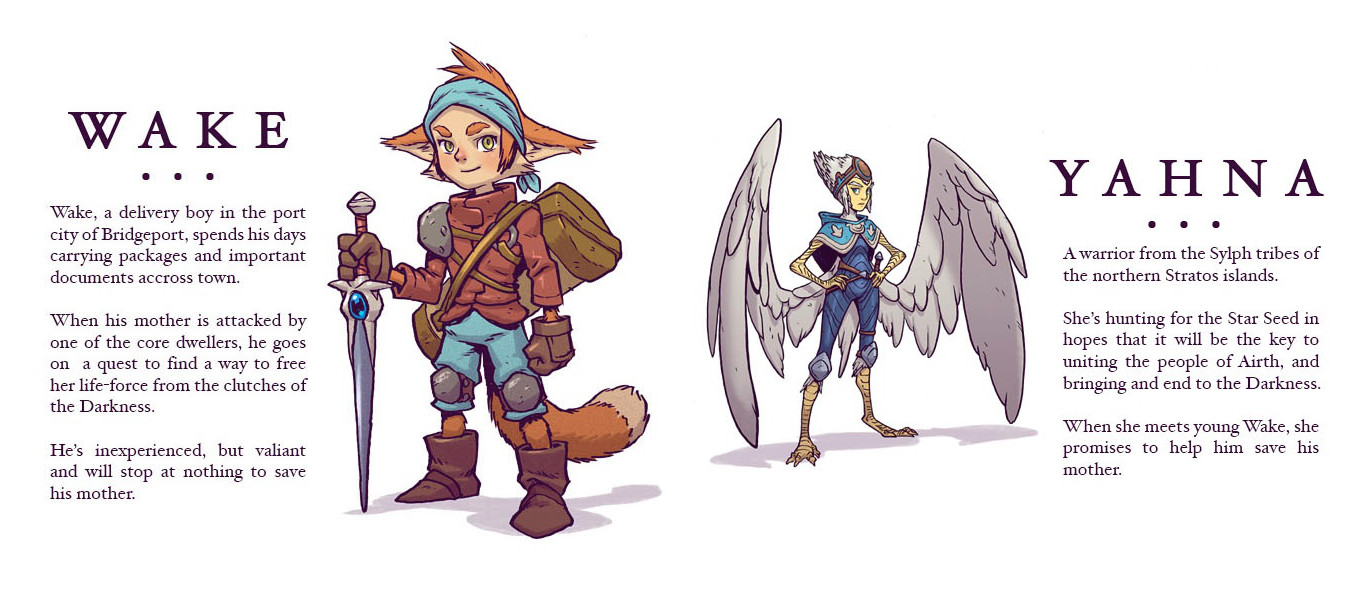
Character design is always a fascinating thing for me, as the look of a character can and should say something about not just who they are but where they come from. If done right, that is. For your leads and beyond, what was the path of their development, and how important to you was it to have unique looks for the denizens of each realm?
JP: The trick was finding the right balance of animal vs. human for Wake. I have some sketches where he’s very much a woodland animal in clothing, and others where he was too cartoony, and for a while he was just a regular boy. I eventually found a design I liked and went with it.
Yahna for a long time was just a winged elf, but as I went more towards the animal idea I made her much more birdlike, and I think she looks way better now.
Grimm and Limberg are essentially the same characters I designed for my Hugo Earhart story for Flight. I updated them a bit, especially Limberg, but they are very much the same guys.
I wanted the characters to be unique, yet fit together well as a team. This meant having a cohesiveness in style, proportion and color. When it came to designing the bad guys I wanted something unsettling. So I took away their eyes and gave them this mangy feathered upper-body and this skinned predator lower body.
One thing I really like about the leads is how Wake – while full of heart – is the amateur in the mix, while Yahna is the experienced warrior of the pair, flipping typical gender roles. Was that something you actively thought about as you developed the characters, or was it just how things came together naturally?
JP: I’ve got three sons and two daughters, and I’ve found that there’s plenty of strong male role models for my boys to look to, but my daughters have to search a little harder. Yahna’s personality and approach to things is very much based on my wife who is practical and doesn’t mess around. And I think Wake is going to need that kind of person in his life in order to become the man he needs to be some day (kind of like me!).
Interested in Jake Parker’s SkyHeart yet? If you are, visit his Kickstarter page and think about backing it. You won’t regret it, I feel.
